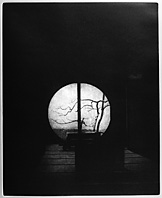What if we let our artistic responses guide our understanding of the world, rather than the other way around? The conventional view makes art out to merely reflect reality — in a nice or nasty way, or in an approving / disapproving way — but basically derivative. But the truth is that a lot of what we take as solid reality is the product of imagination. The power of imagination to re-form the world becomes clear when we consider our artistic responses as primary; and laws, regulations, studies, models, and so on as rationalizations of conclusions arrived at viscerally.
Sea turtles have to be saved because they are officially an ‘endangered species’, not because they are lovely creatures that deserve to live for their own sake. We pretend that science and law require their survival, as if a study or a regulatory re-classification could justify their extinction. Yet it’s that first impression, an essentially artistic response, that animated the human desire to keep them around.
Art exists to realize that response in graphic form, thereby creating and renewing a contemporary sense of reality. Through form and texture, line and shape, color, tone, shading of light and dark, dynamic composition, and other means, images become so memorable that we refer to them when we want to know what a particular slice of life looks like.
Everyone has the imagination to do this. Once the notion of artwork ‘capturing’ or documenting something is discarded, a whole new world opens up, a world shaped by one’s own vision, where novel graphic forms, textures, and tones give new meaning to our surroundings.



Peter,
Interesting to see this today, in juxtaposition with a new article by Roger Scruton that came out just the other day …
“… beauty shines on us from ordinary things. Is it a feature of the world, or a figment of the imagination? Is it telling us something real and true that requires just this experience to be recognized? Or is it merely a heightened moment of sensation, of no significance beyond the delight of the person who experiences it? These questions are of great urgency for us, since we live at a time when beauty is in eclipse: a dark shadow of mockery and alienation has crept across the once-shining surface of our world, like the shadow of the Earth across the moon. Where we look for beauty, we too often find darkness and desecration.”